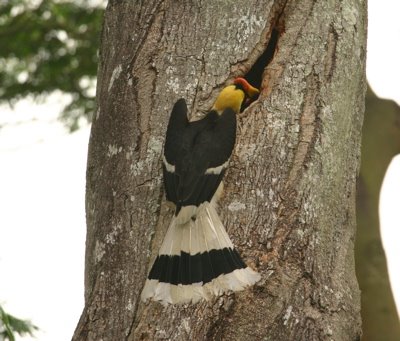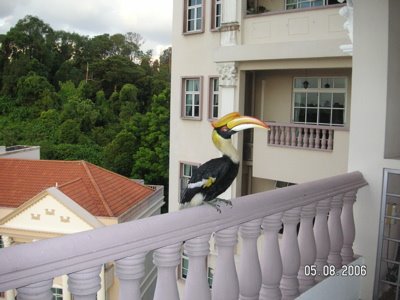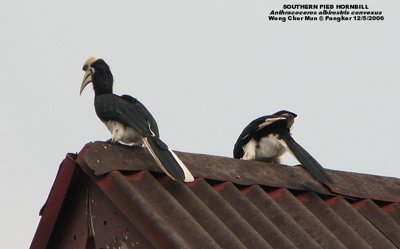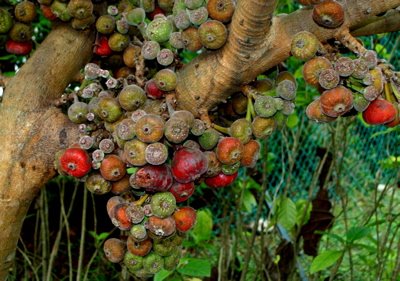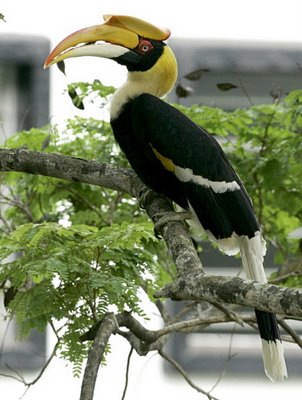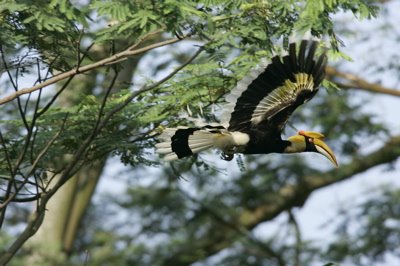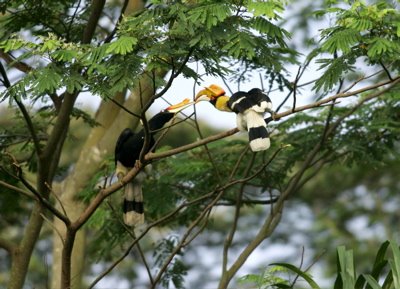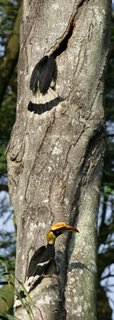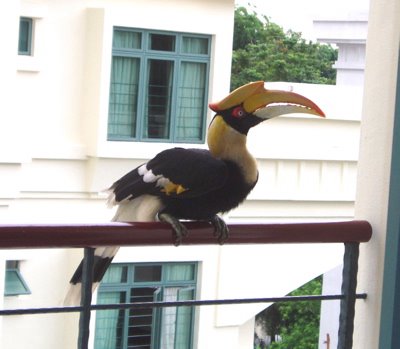Oriental Pied Hornbill: Courtship at Changi
 “Oriental Pied Hornbills (Anthracoceros albirostris) (above), Tanimbar Corellas (Cacatua goffini) and Red-breasted Parakeets (Psittacula alexandri) making loud squawking and screeching sounds got me to abandon my figging at Turnhouse Road in Changi last week.
“Oriental Pied Hornbills (Anthracoceros albirostris) (above), Tanimbar Corellas (Cacatua goffini) and Red-breasted Parakeets (Psittacula alexandri) making loud squawking and screeching sounds got me to abandon my figging at Turnhouse Road in Changi last week.  “The birds all seemed to have a stake in the two Heritage trees (above); the parakeet flew in and then out. Eventually the corellas settled for the smaller cavity in the Gluta malayana while the bigger hornbills claimed the bigger hollow in the Shorea gibbosa tree.
“The birds all seemed to have a stake in the two Heritage trees (above); the parakeet flew in and then out. Eventually the corellas settled for the smaller cavity in the Gluta malayana while the bigger hornbills claimed the bigger hollow in the Shorea gibbosa tree.  “The male hornbill waited outside while his female disappeared into the Shorea cavity (above, left). After a while he flew off and brought back a red fruit, possibly jumbu bol (Syzygium malaccense) which he fed to the female when she peered out from the tree-hole (above, right). It must be quite spacious in there because the male had to dip his head right into the hollow before she reappeared. They flew off after a while. An hour later they were back again for another short visit.
“The male hornbill waited outside while his female disappeared into the Shorea cavity (above, left). After a while he flew off and brought back a red fruit, possibly jumbu bol (Syzygium malaccense) which he fed to the female when she peered out from the tree-hole (above, right). It must be quite spacious in there because the male had to dip his head right into the hollow before she reappeared. They flew off after a while. An hour later they were back again for another short visit. “I'm wondering if these activities in the hollow of the Shorea will harm the tree. Although there are only a few short branches high up there, clumps of fresh young leaves are growing at the ends. The Gluta seems to fare better with more foliage.
“Has the courtship ended? And then will the female be sealed in?”
Angie Ng
27th November 2006
Note: Oriental Pied Hornbills are getting common on mainland Singapore. There is an earlier account on the courtship behaviour of a pair at Changi, seen in October 2006.
Input and images by Angie Ng.
Labels: Hornbills
